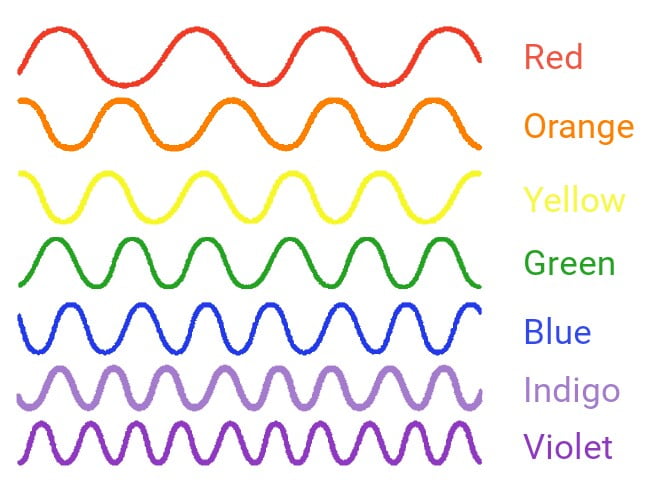
Sky is blue because of the scattering of light by the air molecules.
White light consists of seven different colours; VIBGYOR (Violet, Indigo, Blue, Green, Yellow, Orange and Red).
When a white light falls on the surface of a prism, it gets split into seven different colours. This is known as dispersion of light. Each colours have their own frequencies and wavelengths. Violet has the shortest wavelength while red has the longest wavelength.


Our atmosphere mostly contains gases, dust particles, water droplets and water vapour. Among the atmospheric gases, 78% is nitrogen, 21% is oxygen and 1% is other gases. When the sunlight falls on these air molecules, light gets scattered.
Scattering is the process in which a particle absorb sunlight and re-emits it in various direction. If blue light is incident on a particle, then the particle scatters the blue light in every direction, and the particle seems to be blue. In the same way, if a particle is white then it means that the particle scatters all the seven colours equally in same amount. But, not all the particles scatter light equally.
The intensity of scattering of light is determined by Rayleigh law of scattering. This law states that,
“The intensity of scattered light is inversely proportional to the fourth power of the wavelength of a wave.” \[I ∝ \frac{1}{λ⁴}\]
So, if the value of $λ$ is less, the value of intensity of scattering of light will be more. That’s why violet gets scattered most while red gets scattered least.
But, our sky doesn’t seem to be violet, it is because of the following two reasons;
1. The amount of violet in sunlight is very less as compared to blue. So, it gets scattered in less amount.
2. Our human eyes are less sensitive to violet. So, the indigo and blue colour mix up to give sky blue colour. That’s why, the sky is blue.
Why is our sun yellow?
If we look upward towards sun, then we see a yellow sun. It is because of the remaining colours in the sunlight. Violet, indigo and blue have been scattered. So, the remaining colours are; green, yellow, orange and red. These remaining colours mix up to give a yellow-like colour to our sun when we look towards it.

What would be the color of our sky if there was no atmosphere?
In the absence of atmosphere, light will not get scattered. So, if we look at the sun, it will be completely white. But, if we look at other directions, then we will not see anything, only darkness.

Why are sunrise and sunset red?
At the time of sunrise or sunset, the sun is near the horizon.

In this case, the sunlight has to travel more in the atmosphere to reach to our eyes. So, light gets scattered more. In the way, VIBGY (Violet, Indigo, Blue, Green and Yellow) colours get scattered. Orange and red remain in the sunlight. That’s why, sunrise and sunset are in reddish orange colour. But, it is dim because most of the light is scattered already and we see very less intense sunlight.

Why are clouds white?
Clouds are mostly made of water droplets. Water droplets also scatter light but why don’t we see blue clouds?
If the size of the particle is less than the wavelength of the violet wave, then the particles scatter light in different amount. The size of the molecules of the atmospheric gases like N₂, O₂, etc. is less than the wavelength of the violet wave, so the atmospheric gases scatter light in different amount and we see blue sky.
But, the size of the water droplets in the cloud is bigger than the wavelength of the violet wave. So, the water droplets scatter all the seven colours equally. The scattered colours again gets mixed up and form white colour. That’s why, clouds are white.




